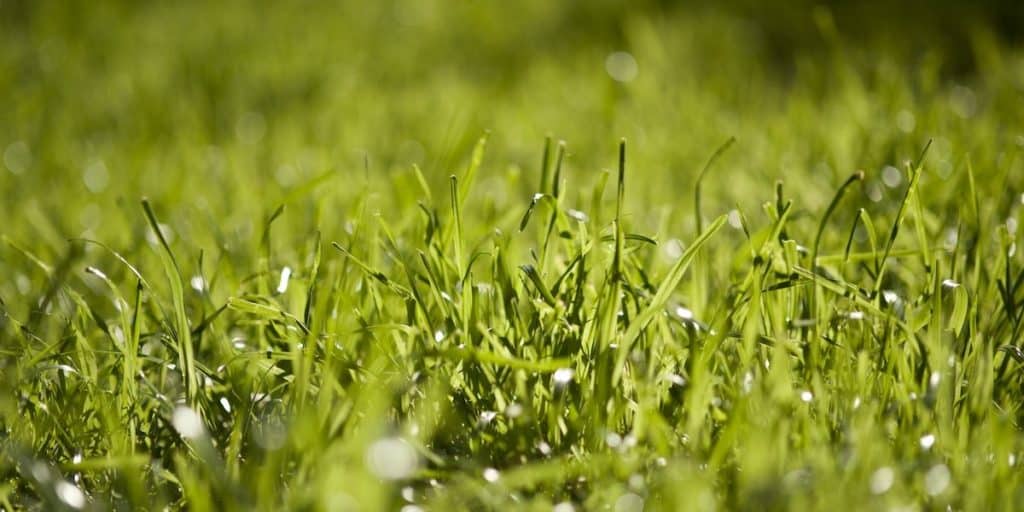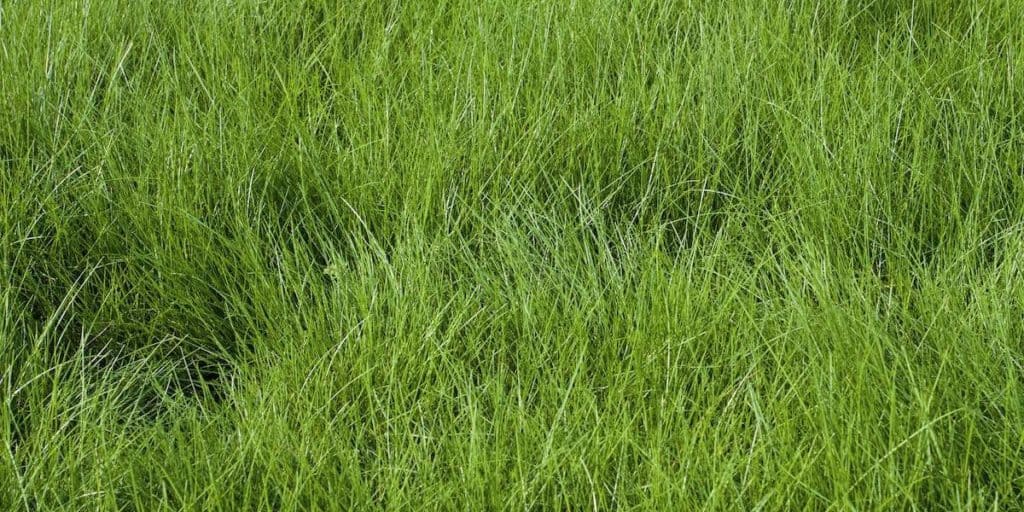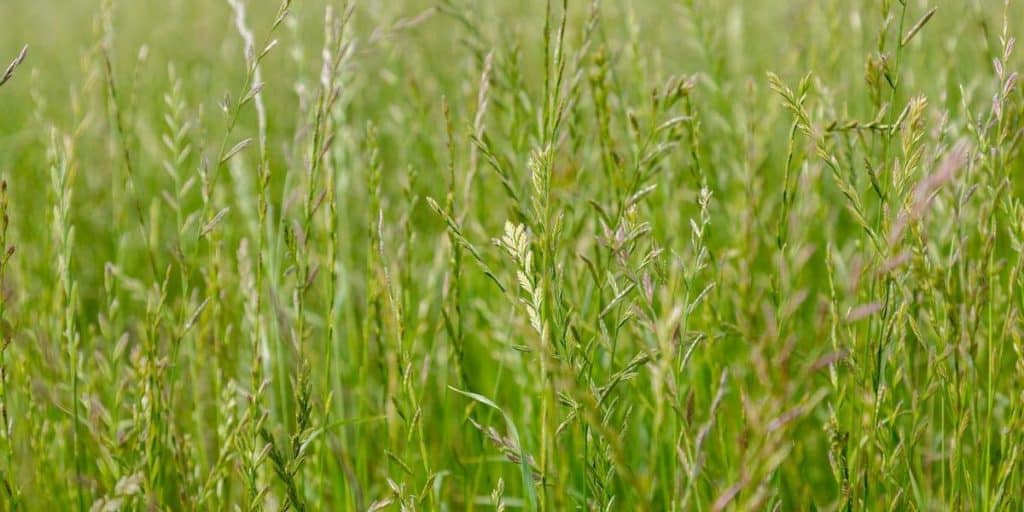Often, grasses go dormant in the winter. Essentially, that just means they lose their color and appear dead. However, there are several grass varieties that don’t go through this process.
Kentucky Bluegrass is one of the best grass types that doesn’t go dormant in the winter. Other species, such as Ryegrass, Bentgrass, and Fescue, also don’t go dormant and will retain their beautiful color throughout the year.
Let’s discuss some of these grass varieties and how well they hold up in the winter months.
1. Kentucky Bluegrass

Kentucky Bluegrass is by far the most tolerant of the colder weather in winter. For this reason, it’s also the most commonly planted winter grass.
This type of grass is excellent for coverage and, once fully developed, can stay strong even when walking on or driven on consistently. The broad leaves often embrace the snow and ice, producing gorgeous winter patterns that stand stark against the deep green of the grass.
Kentucky Bluegrass tends to germinate slower. However, once it takes off, it takes off. The downside to this grass is that while it doesn’t go dormant in the winter, it often does lose its coloration in high-heat environments. This can make growing in the summer months challenging, mainly if you live in an area with harsher summers.
The main thing with this type of grass is to water it regularly. Usually, the natural precipitation during the winter months will do this for you. Still, if you want it to be a year-round grass, you may have to set up specific irrigation measures to help it continue to grow well. If you live in a drier winter climate, you may also need to do this during winter.
However, if you’re looking for grass that maintains its coloration and continues to grow specifically in the winter months, then you can’t go wrong with Kentucky Bluegrass.
2. Improved Tall Fescue

Improved Tall Fescue is one of the best cold-season grasses, coming in only second to Kentucky Bluegrass. One of the best parts of this grass is the reminiscence of many summer types of grass.
This type of grass boasts a fine texture, unlike many other kinds that don’t go dormant in the winter. This quality gives it a beauty that reminds you of warm summer days.
As the name suggests, this type of grass will grow extraordinarily fast, and when it reaches full maturity, it does grow quite tall due to its deep root systems. This is also one thing that differentiates it from many other winter types of grass, which often have very shallow root systems.
Improved Tall Fescue does extraordinarily well throughout the year. While initially, it could only be grown well in the dead of winter, it has been adapted to be grown every season.
3. Velvet Bentgrass

Velvet Bentgrass is one of the hardiest winter grasses on this list, coming in third to Kentucky Bluegrass and Improved Tall Fescue. One could even argue that Velvet Bentgrass is better than the other two because it is built for enormously cold temperatures.
However, this type of grass often requires significantly more maintenance to keep up with, which can present challenges in the winter when it’s difficult to provide large amounts of water.
Almost every type of Bentgrass is suitable for winter, but they also all need more attention than some other varieties. This is one of the reasons this type of grass isn’t at the top of the list.
While Velvet Bentgrass does maintain a green coloration throughout the winter months, it isn’t as distinct as some other grasses that don’t go dormant throughout the winter. Instead, this grass often takes on a mix of gray and green hues. Once the ice begins to cover it, it can appear to turn brown even though it isn’t dormant.
4. Creeping Bentgrass
All species of Bentgrass maintain a gorgeous green color throughout the colder months. Creeping Bentgrass is similar to Improved Tall Fescue in that the leaves are relatively narrow. In contrast, most winter grasses need broader leaves to grow successfully through the snow and ice in the winter.
Creeping Bentgrass grows relatively slowly but produces a surprising amount of coverage after it fully matures. Another benefit to this grass is that it doesn’t grow overly tall. This makes it one of the winter grasses that is significantly easier to take care of since you don’t have to worry about maintaining the height during winter.
However, on the other side, this variety can be challenging when it comes to overall maintenance. While you don’t need to cut it during the winter months, it can be more challenging to keep it alive. It requires frequent watering as well as needing fertilizer pretty often.
5. Chewing Red Grass
Chewing Red Grass is one of the best options for hardier winter grasses. This type of grass holds up in nearly any season and can grow in all types of soils – acid, infertile, and even sandy soils.
One of the qualities of this type of grass is its persistence in growth despite encountering challenges along the way. It germinates relatively slowly, usually between 14 and 21 days, taking the time to push through obstacles in the soil before eventually breaking through the cold winter ground.
This type of grass maintains a light green color throughout the year. Often, it grows in bunches, but these bunches tend to cover a large area of ground, unlike some other grasses. Overall, it’s one of the best for non-dormant winter grasses.
6. Ryegrass

All species of Ryegrass stay active during the winter months. However, this variety doesn’t hold up as well as some of the other options discussed in today’s list.
While Ryegrass doesn’t technically go dormant in the colder months, it often does tend to fall in that direction once the first frost happens.
Ryegrass is enormously suitable for geographical areas that have milder winters. However, it doesn’t do as well in areas with heavy snowfall and frequent frosts.
In the early months of winter, Ryegrass will flourish. The tall stalks will grow, producing a stunning green that covers your lawn. All things considered, this grass grows significantly faster than some other grass varieties. This is in part due to its shallow root system.
The shallow roots, however, also make it significantly less heat-tolerant than some other varieties. One of the primary uses of this grass is grazing for various animals during the winter months because it grows so quickly and produces taller stalks.

